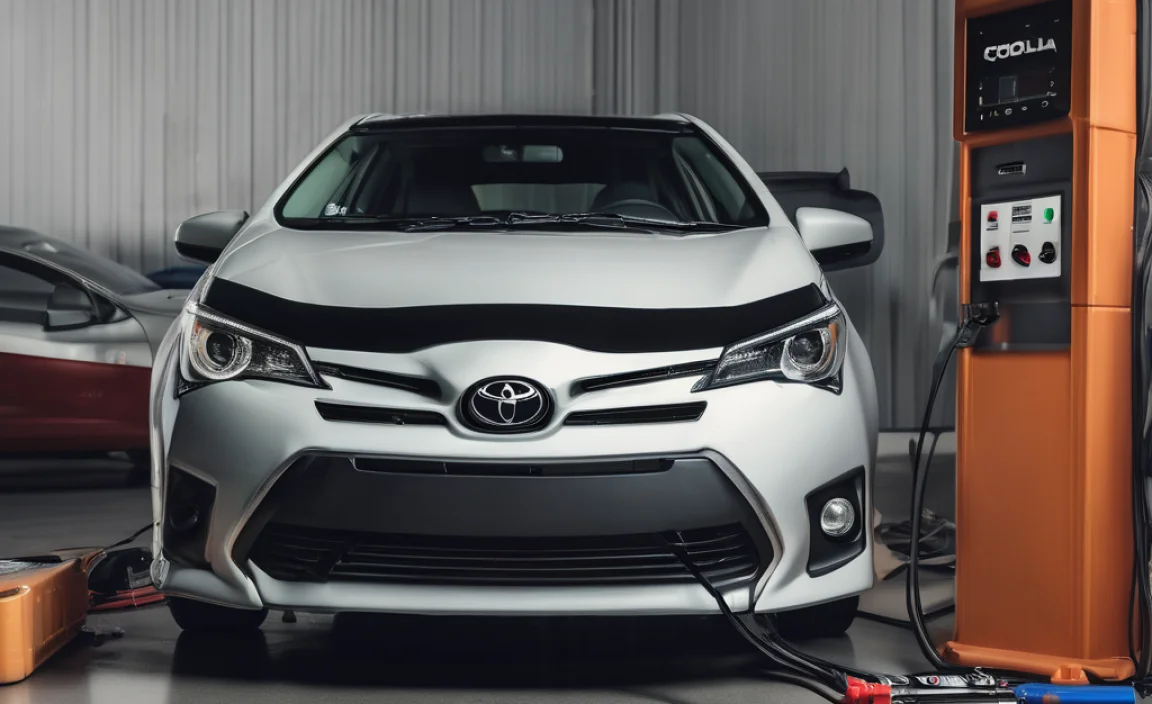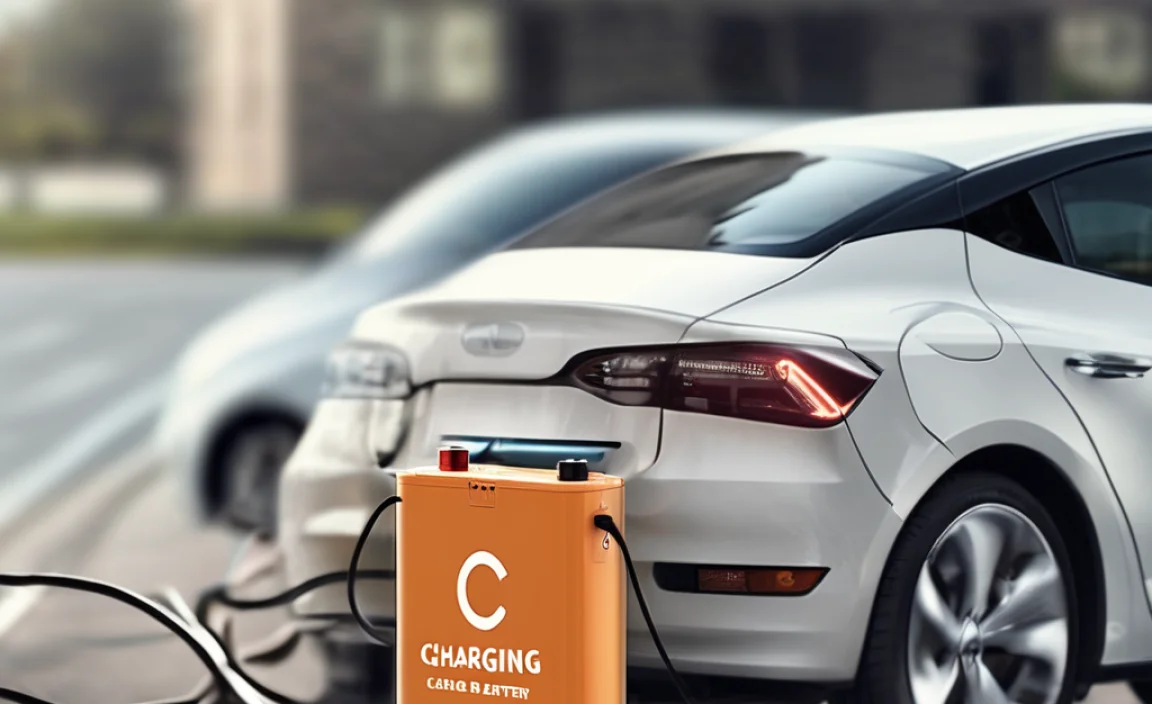Need to connect your new wood stove to an existing chimney? A chimney adapter for wood stove is the crucial piece that safely and effectively bridges the gap, ensuring proper venting and preventing dangerous smoke buildup. It’s a surprisingly simple but absolutely essential component for any wood stove installation.
Tired of staring at that beautiful new wood stove, unsure how to hook it up to your existing chimney? You’re not alone! Many homeowners face this common puzzle when they decide to embrace the cozy warmth and charm of a wood-burning stove. The good news is, you don’t need to be a chimney sweep to figure it out. The key piece that makes this connection safe and functional is a chimney adapter for wood stove. It’s like the perfect connector for your power needs – it ensures a secure and efficient link. We’ll walk you through exactly what it is, why it’s so important, and how to make sure you choose the right one for your setup. No confusing jargon, just clear steps to get your stove up and running safely.
What Exactly is a Chimney Adapter for Wood Stove?
Think of a chimney adapter for wood stove as a translator between two different parts of your heating system that aren’t naturally best friends. Your wood stove has a specific size and shape for its flue pipe (where the smoke exits), and your house’s chimney often has a different opening, perhaps an older masonry flue or a different sized metal liner. The adapter is the bridge that perfectly matches these two different sizes and materials, creating a solid, secure connection.
This simple piece of equipment is made from durable materials, usually stainless steel or heavy-gauge metal, designed to withstand the high temperatures and corrosive byproducts of burning wood. Its primary job is to ensure that smoke, gases, and carbon monoxide are safely channeled up and out of your home through the chimney, rather than leaking into your living space. Without the right adapter, you simply can’t make a safe and proper connection.
Why is a Chimney Adapter for Wood Stove Even Necessary?
You might be tempted to think you can just somehow shove the stove pipe into the chimney opening, but that’s a big no-no. Here’s why a proper chimney adapter for wood stove isn’t just recommended, it’s proven essential:
Safety First: This is the biggest reason. A secure adapter prevents smoke, soot, and dangerous carbon monoxide gas from escaping into your home. Carbon monoxide is odorless and deadly, so a tight seal is critical.
Proper Draft: Wood stoves need a good “draft” to work efficiently. This means the smoke needs to flow smoothly up the chimney. An adapter helps create the right conditions for a strong, consistent draft, ensuring your stove burns cleanly and heats your home effectively. A poor draft can lead to smoke backing up into the room.
Preventing Leaks and Fire Hazards: Gaps between your stove pipe and chimney can allow superheated gases and embers to escape, posing a serious fire risk. The adapter creates a sealed connection that minimizes these risks.
Code Compliance: Building codes almost universally require specific methods for connecting wood stoves to chimneys. Using the correct adapter is usually a key part of meeting these safety standards.
Protecting Your Chimney: Some adapters can help protect the existing chimney lining from direct exposure to high heat and creosote buildup, potentially extending its life.
Without a chimney adapter for wood stove, you’re essentially leaving a gaping hole in your home’s safety system. It’s a small component that plays a massive role in preventing accidents and ensuring your wood stove operates as intended.
Types of Chimney Adapters for Wood Stoves
Not all chimneys and stoves are created equal, so there isn’t a one-size-fits-all adapter. The type you’ll need depends on what your chimney is made of and what kind of stove pipe you’re using.
Adapters for Masonry Chimneys
If you have a traditional brick chimney, you’ll likely need a masonry adapter. These are designed to connect your stove pipe securely to the opening of a brick flue.
Round to Rectangle/Square Adapters: These are common for connecting a round stove pipe to the often rectangular or square opening of a masonry flue. They might have a flange that sits on top of the chimney or a plate that fits into the flue.
Damper Adapters: Some adapters come with a built-in damper. A damper allows you to control the airflow up the chimney, which can be helpful for regulating the stove’s burn rate and preventing heat loss when the stove is not in use.
Triple Wall Pipe Adapters: If your chimney has been relined with insulated triple-wall chimney pipe, you’ll need an adapter specifically designed for that type of pipe to connect to your stove.
Adapters for Existing Chimney Liners
Many modern chimneys, especially those relined for wood stove use, have a prefabricated metal liner.
Single Wall Stove Pipe to Chimney Liner Adapters: These are used when your stove has single-wall stove pipe (the black pipe you see going into the wall) and it needs to connect to a factory-built metal chimney system. These adapters often seal around the opening of the liner.
Insulated Chimney Pipe Adapters: If you’re connecting to an insulated (Class A) chimney system, you’ll need an adapter designed for that specific type of pipe. These are crucial for maintaining the insulation’s effectiveness and ensuring safety.
Specialty Adapters
Sometimes, you might encounter unique situations that require specialized adapters.
Wall Thimble Adapters: If your stove pipe needs to pass through a wall or ceiling before reaching the main chimney, you’ll need a wall thimble. This acts as a safety barrier, keeping the combustible wall materials away from the hot stove pipe. Some thimbles include adapter functions to connect to the chimney pipe.
Stove Collar Adapters: Less common for connecting to the chimney, but important for the stove itself, is the stove collar which is the part on the back or top of the stove where the stove pipe attaches. Sometimes, a different size or configuration stove collar might be needed for your specific stove pipe.
The key is to identify your chimney type and the type of stove pipe you are using. This will guide you to the correct chimney adapter for wood stove.
Choosing the Right Chimney Adapter for Wood Stove: A Practical Guide
Picking the correct adapter might seem daunting, but it’s all about matching a few key details. Think of it like picking the right adapter for your phone charger – you need it to fit precisely and safely provide power.
Here’s a step-by-step approach:
1. Identify Your Stove Pipe: What is the diameter of the flue outlet on your wood stove? This is almost always the same diameter as the stove pipe (usually 6 or 8 inches).
2. Identify Your Chimney Type:
Masonry Chimney: Is it brick and mortar? Does it have an existing flue liner (clay tile, metal)?
Factory-Built Metal Chimney (Class A): This is a pre-fabricated chimney system designed for high temperatures. You’ll often see it as insulated triple-wall pipe. Look for manufacturer labels if possible.
Existing Metal Liner: Is there a flexible or rigid metal liner inside your old masonry chimney? What is its diameter?
3. Determine the Connection Point: Are you connecting directly to the top of the chimney, or do you need to go through a wall or ceiling first (requiring a wall thimble)?
4. Measure Accurately: If you have a masonry chimney, measure the opening you need to connect to. For metal chimneys, look for the specific connection type.
5. Consult the Experts: If you’re unsure at any point, don’t guess!
Stove Manufacturer: Check your wood stove’s manual for recommended connection types.
Chimney Manufacturer: If you know the brand of your chimney system, consult their documentation or website.
Local Building Codes: Your local building department can provide specific requirements.
Reputable Retailers/Installers: A good fireplace or stove shop can help you identify the right parts. Websites like ICC Evaluation Service often provide listings for certified chimney components, which can be a good indicator of quality and compliance.
Table: Common Adapter Scenarios
| Your Chimney | Your Stove Pipe | Likely Adapter Type | Key Considerations |
| :—————– | :————– | :—————————————— | :——————————————————– |
| Masonry (Brick) | Single Wall | Masonry Plate/Roof Flashing with Collar | Seal to flue opening; handle creosote; size match. |
| Insulated Metal | Single Wall | Class A Chimney Adapter/Storm Collar | Secure connection to liner; prevent heat transfer. |
| Masonry with Liner | Single Wall | Liner Adapter/Storm Collar (specific to liner) | Match liner type (flex/rigid); diameter is critical. |
| Masonry (Brick) | Single Wall | Chimney Top Adapter (secure fitting) | Weatherproofing; secure attachment to chimney cap/crown. |
Materials Matter
Stainless Steel: High-quality stainless steel (like 304 or 316 grade) is the most durable and rust-resistant option, especially for outdoor connections or high-moisture environments.
Heavy Gauge Galvalume/Galvanized Steel: These can be suitable for some interior connections but may not last as long as stainless steel in harsh conditions. Always check the product’s specifications and warranty.
Installation Basics: Getting it Done Safely
Installing a chimney adapter for wood stove is a critical step that requires careful attention to detail. While this guide provides general information, always follow the manufacturer’s instructions for both your stove, stove pipe, chimney system, and the adapter itself. If you are not comfortable with heights or working on a roof, or you are unsure about any part of the process, it is highly recommended to hire a certified professional like a chimney sweep or fireplace installer. Safety is paramount!
Tools You Might Need:
Screwdriver set
Drill with appropriate bits
Measuring tape
Level
Safety glasses
Work gloves
Ladder (if working on the roof)
Telescoping pole or a way to access the chimney top safely
High-temperature sealant (specific for stove pipe and chimney use)
Adjustable wrench
Metal snips (occasionally, for minor adjustments)
Step-by-Step Connection Process (General Guidance):
This assumes you’re connecting the stove pipe to the top of an existing masonry chimney. Adaptations will be needed for other chimney types.
1. Safety First: Ensure you have a stable ladder and a safe working area. If working on the roof, use fall protection if necessary.
2. Prepare the Chimney Top:
If there’s an old cap, remove it.
Clean the top of the chimney and the inside of the flue opening. Remove any loose mortar, soot, or debris.
Inspect the chimney crown (the concrete slab on top) for cracks and repair if needed. This is a good time to ensure your chimney is structurally sound. A reliable source for chimney maintenance tips is the Chimney Safety Institute of America (CSIA).
3. Position the Adapter:
For a masonry plate adapter: Place the adapter plate over the chimney flue opening. It should rest securely on the top courses of brick.
Your adapter might have a collar that extends down into the flue or up to meet the stove pipe.
4. Secure the Adapter:
Depending on the adapter type, you might secure it with screws drilled into the brick (use masonry anchors) or by using high-temperature sealant and mortar to bond it to the chimney.
Ensure the adapter is level and sits firmly.
5. Connect Stove Pipe:
Slide your first section of stove pipe (often a single-wall piece for the initial connection) into the collar or opening provided by the adapter.
Important: The stove pipe should typically slide over the connection or collar, not under it, to prevent creosote and water from getting between the pipes. Check your adapter and pipe manufacturer’s instructions for the correct overlap direction.
Secure the stove pipe to the adapter using sheet metal screws (usually 3-4 screws evenly spaced). These help prevent the pipe from being pulled out.
6. Seal Connections (if necessary): While high-temperature sealant isn’t always required between the adapter and the chimney flue itself (the mechanical connection should do most of the work), it’s often recommended for the connection between the stove pipe and the adapter collar if the fit isn’t perfectly tight, or if specified by the manufacturer. Use a small bead of high-temperature sealant rated for chimneys. Do NOT use regular caulking.
7. Continue with the Chimney System: Attach subsequent sections of stove pipe or insulated chimney pipe as per their respective manufacturer’s instructions, ensuring proper offsets, clearances to combustibles, and secure connections for each joint.
Key Clearance Considerations:
Combustible Materials: Always maintain the required clearance between stove pipe, chimney pipe, and any combustible materials (wood framing, insulation, drywall) as specified by the stove, pipe, and adapter manufacturers, and local codes. This is usually a minimum of 3 inches for single-wall pipe and less for insulated pipe. A wall thimble will be required if the pipe passes through walls or ceilings.
Roof Penetrations: If your chimney exits through the roof, ensure it extends the required height above the roof line, adjacent structures, and any potential ignition sources. Consult NFPA 211 standards for precise measurements.
Maintenance Tips for Your Chimney Adapter
Once your adapter is installed, think of it as part of your annual chimney maintenance routine.
Annual Inspection: Have your chimney professionally inspected at least once a year by a certified chimney sweep. They will check the adapter for signs of corrosion, damage, or loosening, as well as the entire chimney system.
Clean Regularly: Regular sweeping removes creosote buildup, which is flammable and can cause chimney fires. A clean system operates more efficiently and safely.
Check for Leaks: Be aware of any signs of smoke or odor escaping into your home. This could indicate a loose connection at the adapter or elsewhere in the system.
Weatherproofing: Ensure any flashing or sealing around the base of your chimney adapter (especially on masonry tops) is in good condition to prevent water from entering the flue.
A well-maintained chimney adapter for wood stove is a silent guardian of your home’s safety and your wood stove’s performance.
Frequently Asked Questions About Chimney Adapters
Here are some common questions beginners have about chimney adapters for wood stoves:
Q1: Do I need a special adapter if my chimney is lined?
Yes, typically you do. If your masonry chimney has been relined with a flexible metal liner or a rigid metal liner, you will need a specific adapter designed to connect your stove pipe securely to that particular type of liner. These adapters are designed to create a tight seal with the liner system.
Q2: Can I use regular black stove pipe all the way up my chimney?
No, absolutely not. Regular single-wall black stove pipe is only rated for proper connections from the appliance to the wall or ceiling and for the first section going into a properly installed chimney system. Beyond that, you must use code-approved chimney pipe, which is typically insulated double-wall or triple-wall pipe (Class A) for safety and efficiency. The adapter is the crucial link between the stove pipe and the proper chimney system.
Q3: How tight does the connection between the adapter and the stove pipe need to be?
The connection between the stove pipe and the adapter collar should be very secure. It’s typically fastened with at least three sheet metal screws. While a tight mechanical fit is essential, a bead of high-temperature chimney sealant can be used to ensure an airtight seal if there are any minor gaps, especially if specified by the manufacturer.
Q4: What are the dangers of NOT using the right chimney adapter?
The primary dangers are fire hazards and carbon monoxide poisoning. An improper connection can allow sparks and hot gases to escape, igniting nearby combustible materials. It can also lead to a poor draft, causing smoke and deadly carbon monoxide to back up into your home. It can also lead to leaks of smoke and soot, making your home dirty and unhealthy.
Q5: Where can I buy a chimney adapter for my wood stove?
You can purchase chimney adapters for wood stoves at specialized fireplace and stove shops, home improvement stores (though selection might be more limited), and online retailers that focus on heating equipment and chimney supplies. Always ensure the product you buy is UL listed or certified by a recognized testing laboratory.
Q6: Can I connect a wood stove to an old, unlined masonry chimney?
While it’s technically possible to connect a stove to an unlined chimney with the right adapter and first section of stove pipe, it is generally NOT recommended for long-term safety and efficiency. Codes often require that masonry chimneys used for wood stoves be relined with a suitable metal liner. An unlined chimney is more susceptible to creosote buildup,



